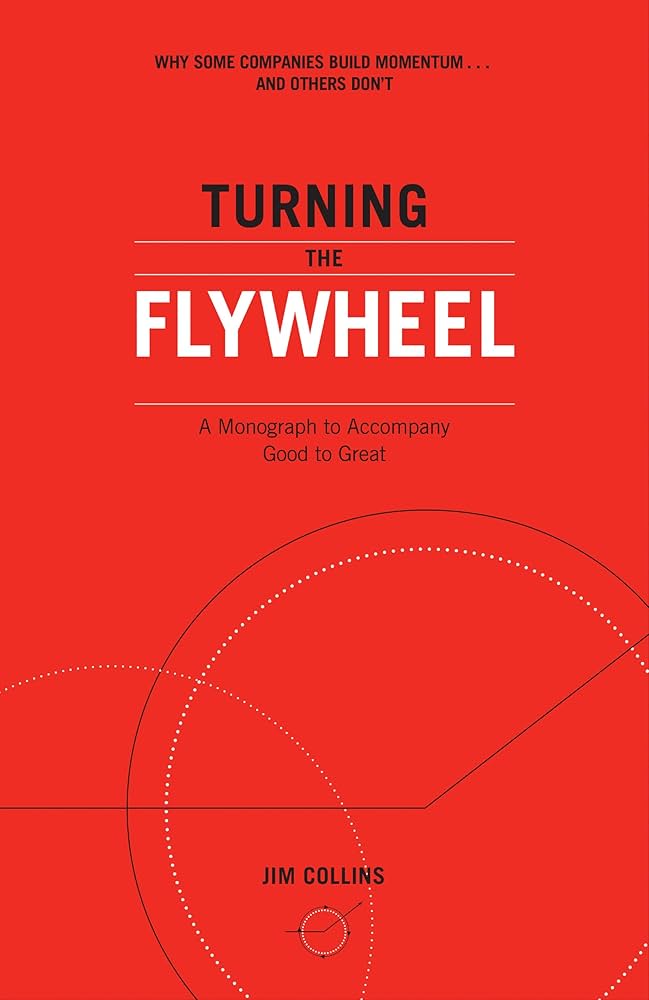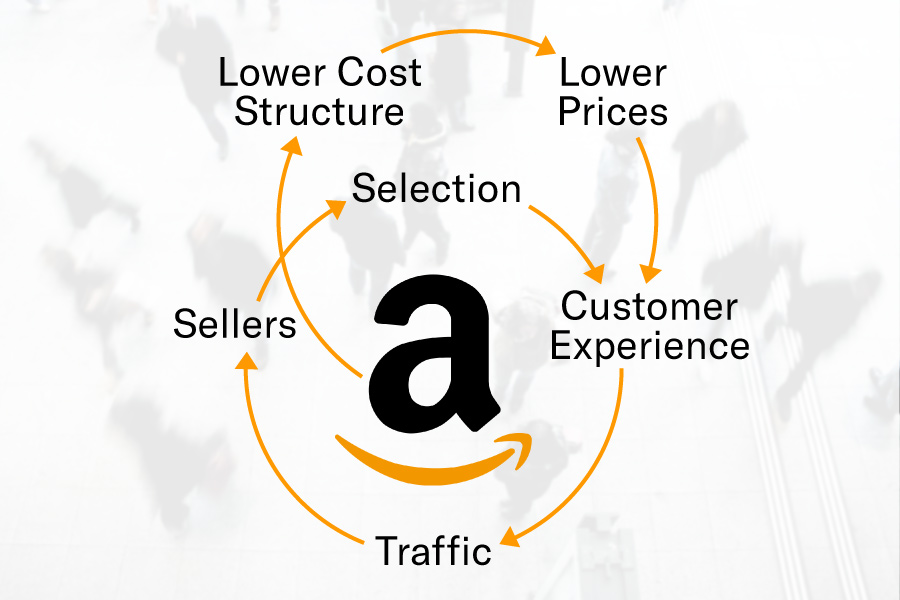
Review
I can remember when I first saw the now famous Amazon flywheel diagram. It’s simplicity and power was genuinely captivating. The flywheel is the single most important concept from ‘Good to Great’. It deserves this monograph. So few companies operate with the clarity of a well understood strategic flywheel. This incredibly brief and insight dense explainer is worth your time.

Key Takeaways
The 20% that gave me 80% of the value:
- In a good-to-great transformation, there’s no miracle moment.
- It feels like turning a a heavy flywheel. Pushing with great effort at first, just to move an inch. With persistent effort you can do an entire rotation. If you don’t stop you’ll build speed, and the wheel will move faster, the time between rotations diminishes. At some point, the flywheel is moving forward with unstoppable momentum.
- You need to find your flywheel to get the power of strategic compounding.
- Bezos turned Amazon into a repeating loop, a virtuous cycle
- Lower prices → more customer visits
- More visits → more 3rd party sellers (paying commission)
- More sellers → expand the store and distribution (fixed costs)
- Expand distribution → grow revenues per fixed cost (efficiency)
- Grow revenues per fixed cost → Lower prices 🔁
- It takes great discipline in bad times not to abandon the flywheel
- Get your team together to build your flywheel. It will create a sense of excitement as you see and feel how to generate results
- What are the essential components?
- Which component comes first?
- What follows? Why?
- How do we complete the loop?
- Do we have too many components?
- Is there anything missing?
- What evidence do we have that this works in practice?
- Each component isn’t just a next step, it’s an inevitable consequence of the step that came before
- The most common strategic mistake is failing to aggressively and persistently make the most of victories
- Don’t be seduced by the endless search for the next best thing
- Intel didn’t have to abandon it’s flywheel to move from memory to micro-processors. They just had to transfer the momentum from one product to the next.
- ‘The big thing’ is your underlying flywheel, not a product line.
Steps to Capturing Your Flywheel
- Create a list of significant replicable successes your enterprise has achieved
- Compile a list of failures and disappointments
- Compare the two . What do they tell us about our flywheel components?
- Using components you’ve identified sketch the flywheel
- Where does it start?
- What follows next?
- Explain why each component follows the other (and sits before the next)
- Limit to 6 or fewer components. Does your empirical experience validate it?
- Test it against your success and disappointments. Tweak it until its a better explainer.
- Test the flywheel against the three circles of your hedgehog concept?
- Your hedgehog concept:
- What you’re deeply passionate about?
- What you can be the best in the world at?
- What drives your economic or resource engine?
- Your hedgehog concept:
- If you’re a new company, and don’t have a flywheel yet. Import concepts from other people’s flywheels
- Big winners in corporate history surpass a threshold level of innovation required to compete in their industries. They can turn the initial success into a sustained flywheel.
- You cannot falter on any primary component and sustain momentum.
- Your performance is only as good as the weakest link
- Confront the brutal facts, practice productive paranoia
- Make big bets, after validating that they would pay off.
- Fire bullets, then cannonballs
- Many companies that fail abandon the key principles that made them great
- They hire the wrong people, and don’t follow the hedgehog concept (passion, best, resource engine)
- Demise tends to happen in 5 stages:
- Hubris born of success
- Undisciplined pursuit of more
- Denial of risk and peril
- Grasping for salvation
- Capitulation to irrelevance or death
- The big winners take a flywheel from ten turns to a billion turns, rather than starting new flywheels and taking them through a few turns
- Exit definitively, or renew obsessively. Never ever neglect your flywheel.
- Apply creativity and discipline to each and every turn with as much intensity as you cranked out your first turn
- Be relentless about building momentum.